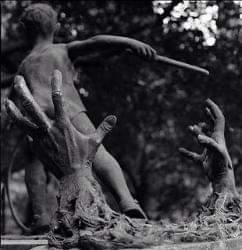The Inuit people can't be imagined without their signature parkas, fashioned from fur and hide of the local wildlife
The Inuit people can't be imagined without their signature parkas, fashioned from fur and hide of the local wildlife. One of the many reasons why early European voyages into the Arctic circle failed is because they were underprepared for the extreme weather conditions of the north.
They wore wool clothing, which kept them hot on the inside, but made them sweat a lot, which made their clothing freeze in the extreme temperatures. The Inuit never faced this problem, as they have been making their parkas from caribou deer or seal hide from as early as 22,000 BC (Siberia).
The production of these parkas took weeks, and the tradition of making them was passed down from mother to daughter, taking years to master. Depending on the geographical location of the tribes, the design of the parkas varied according to the types of animals available. Beadwork, fringes and pendants frequently decorated the clothing.
Roald Amundsen was the first explorer who outfitted his crew with Inuit clothing, which enabled him to successfully circumvent the North-West Passage in 1906.
In the 20th century the use of traditional Inuit clothing declined, but it has seen a recent resurgence, as the Inuit strive to preserve their culture. ❤










Comments
Post a Comment